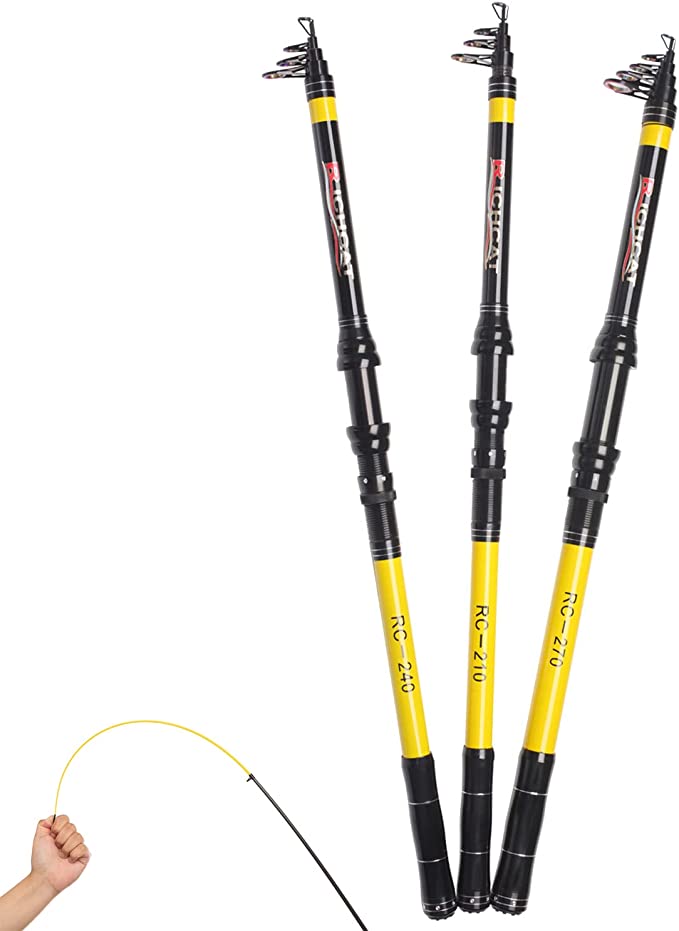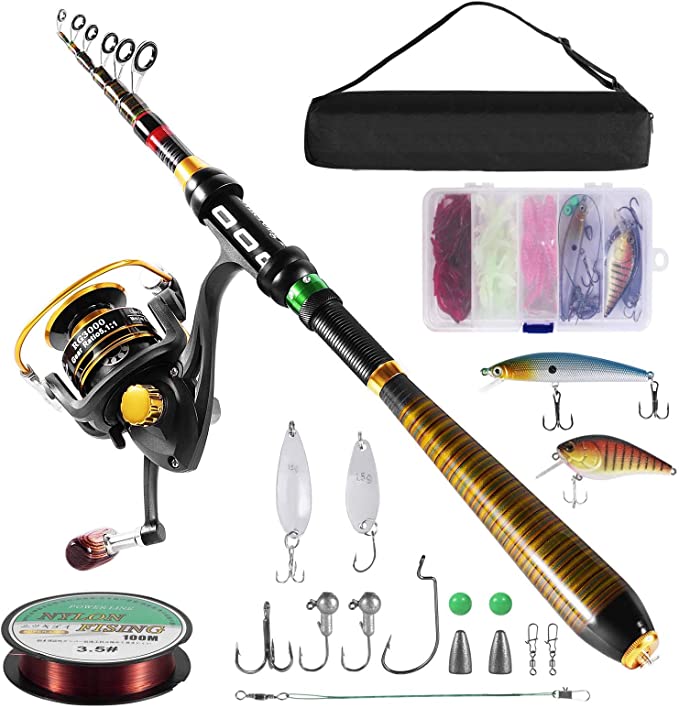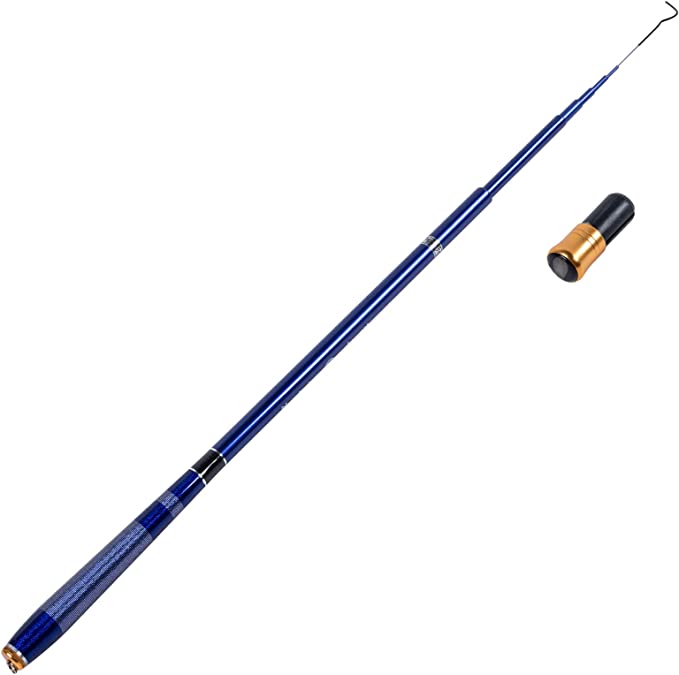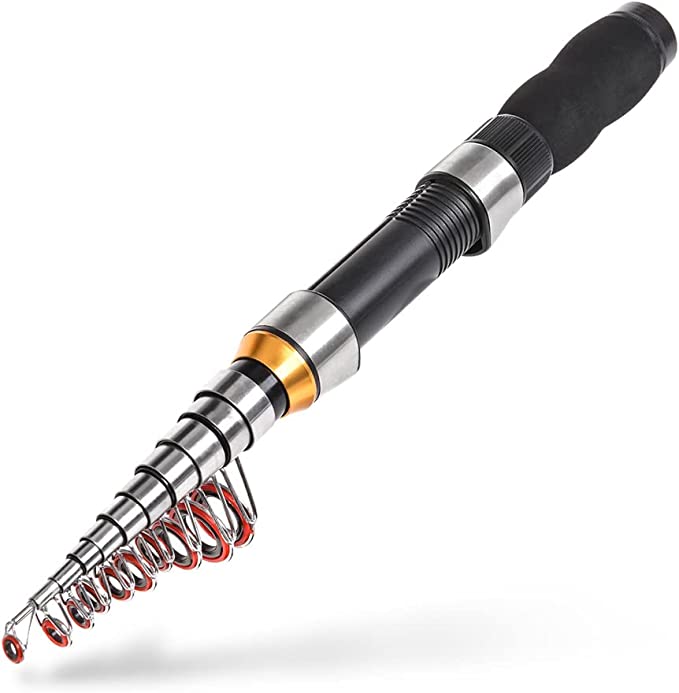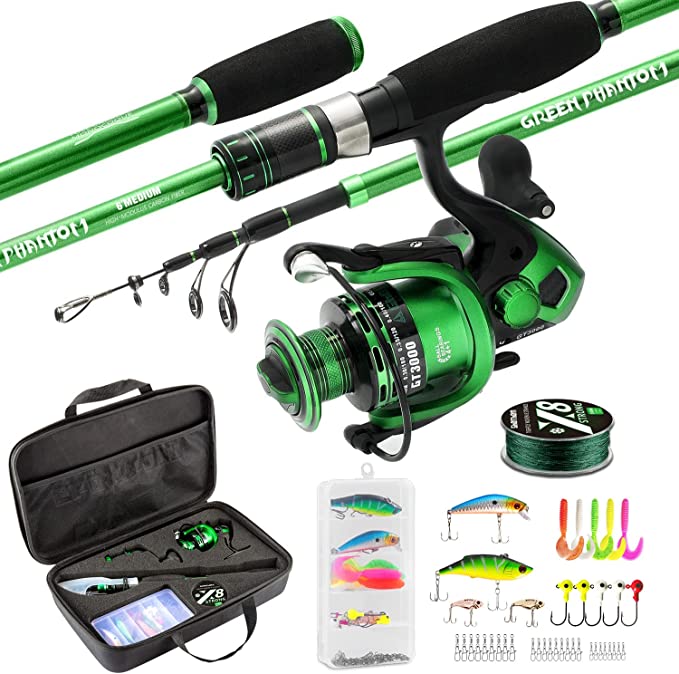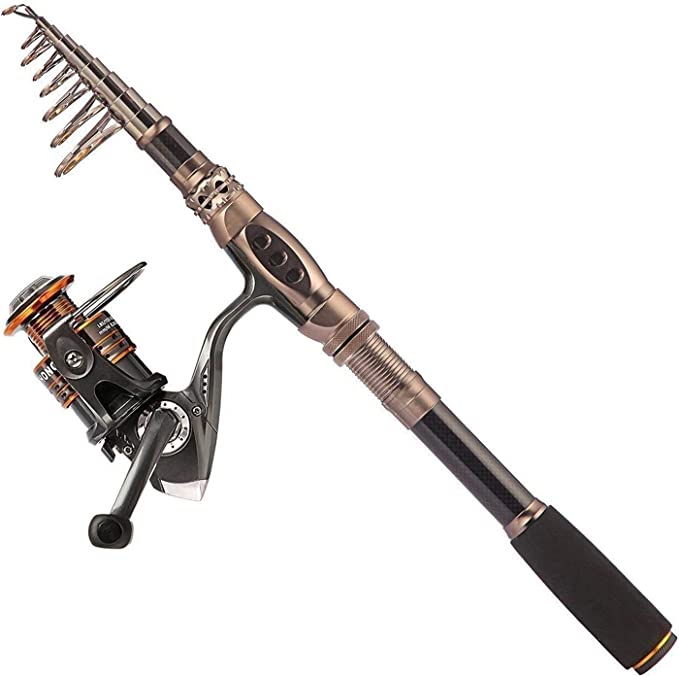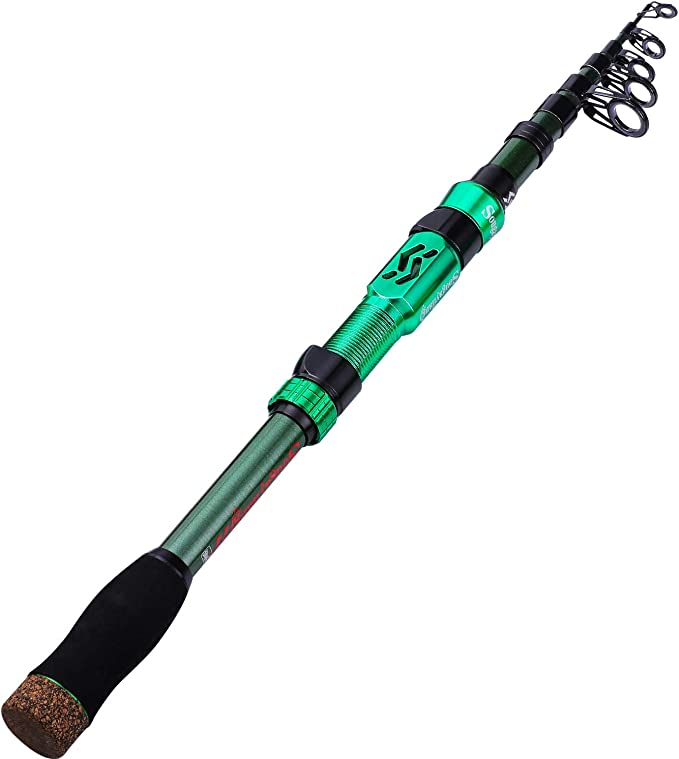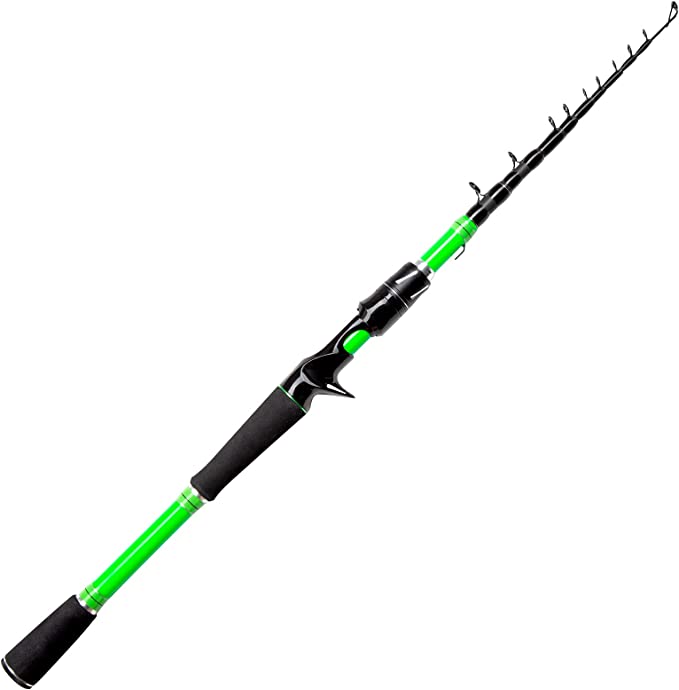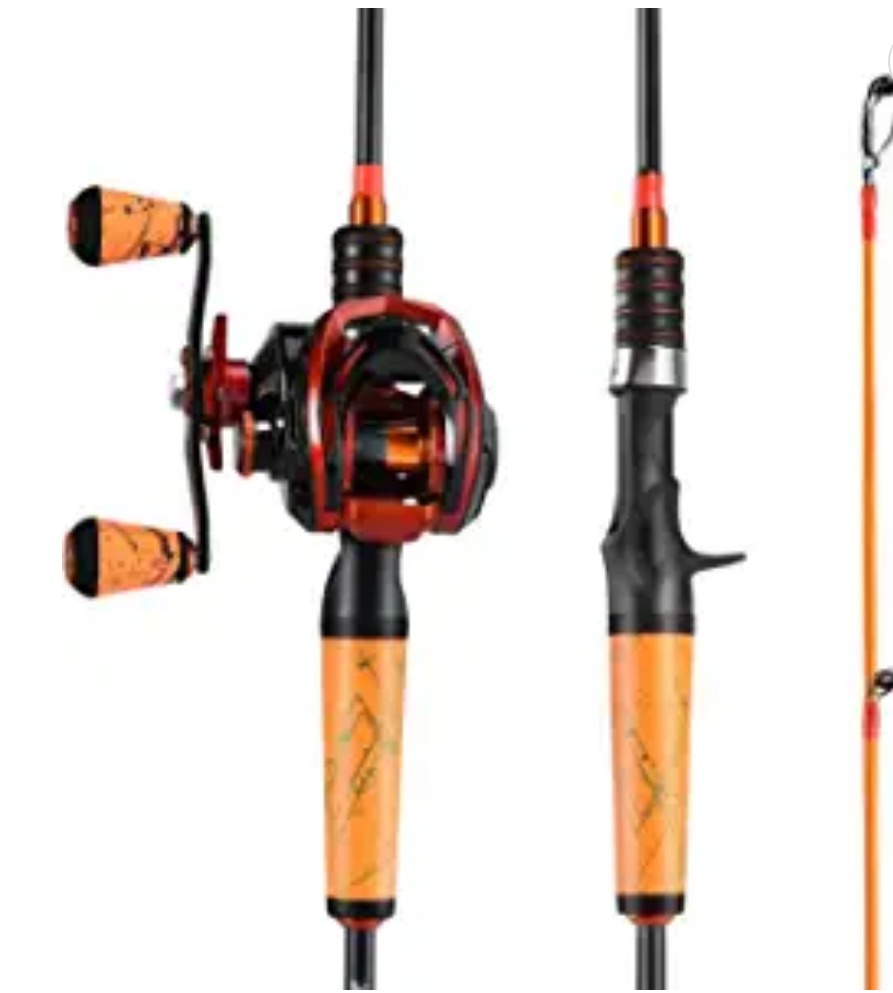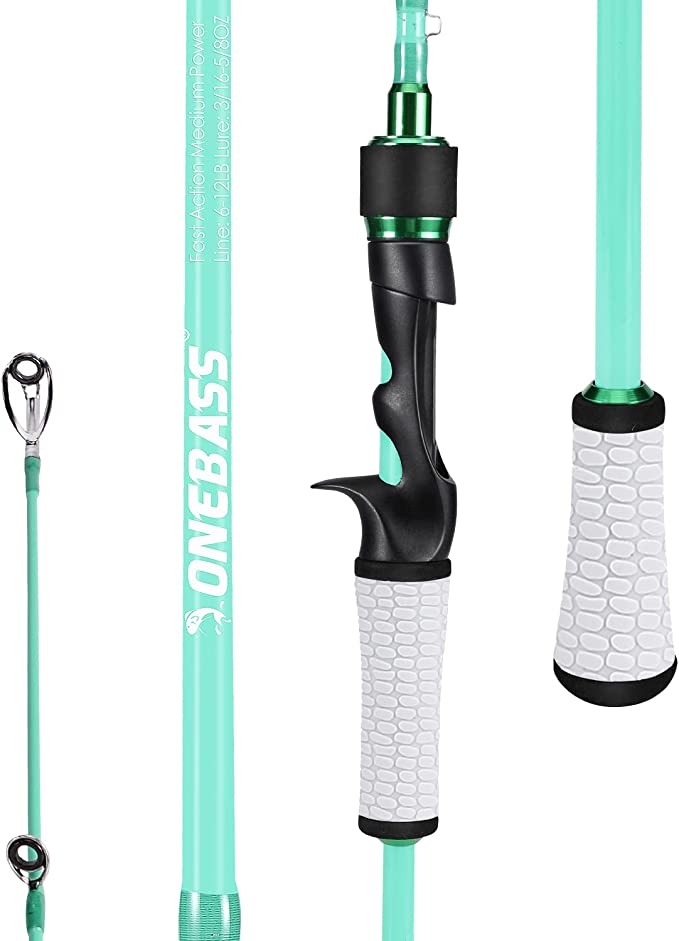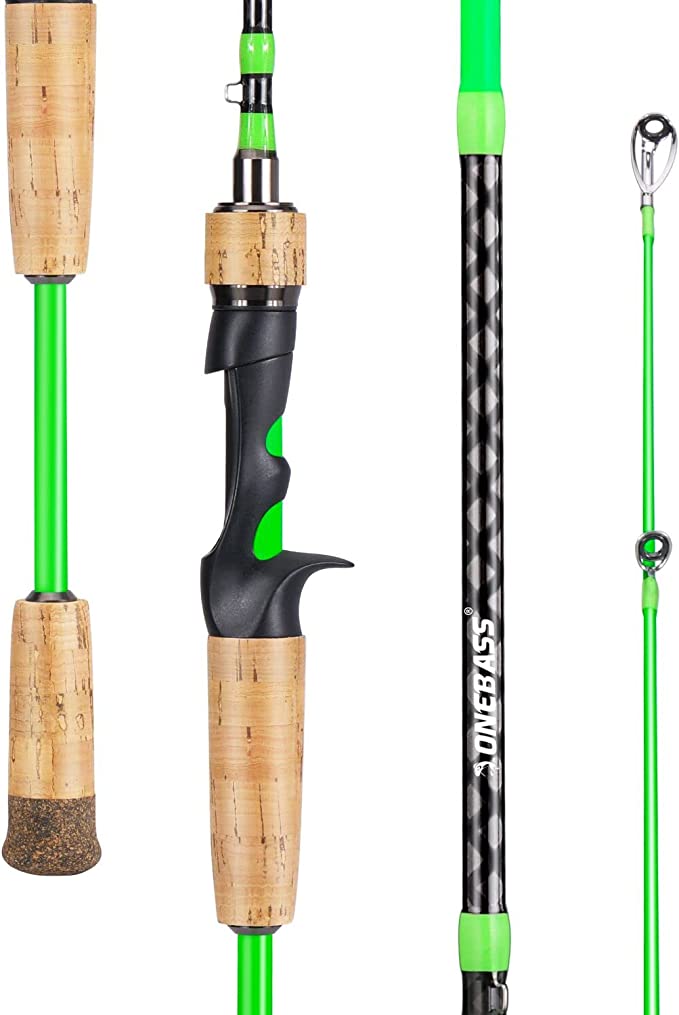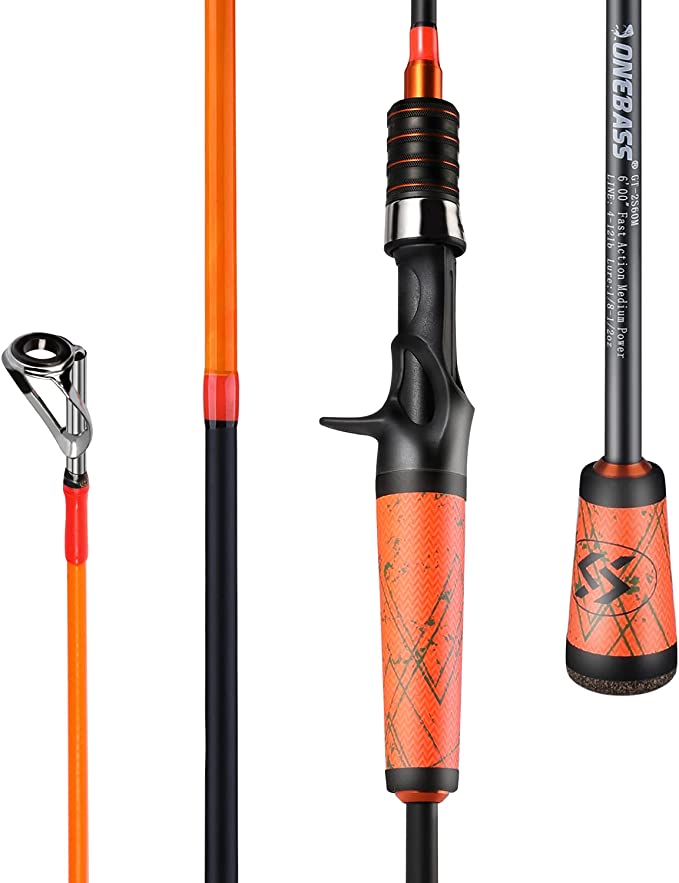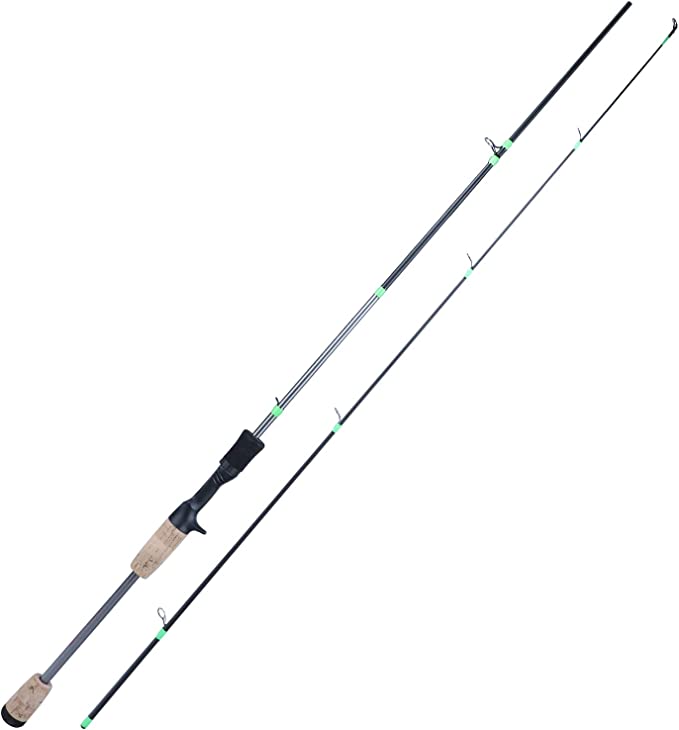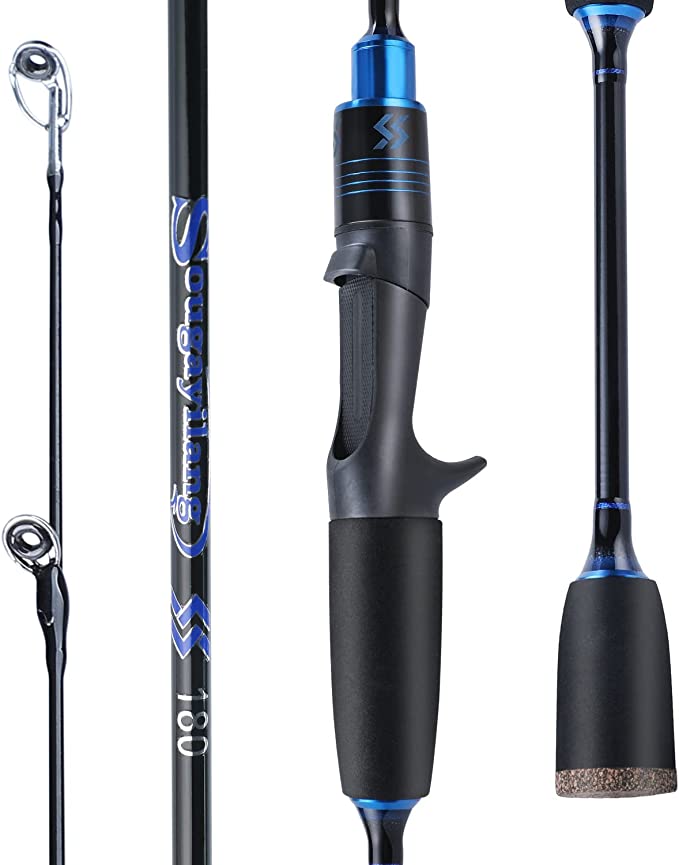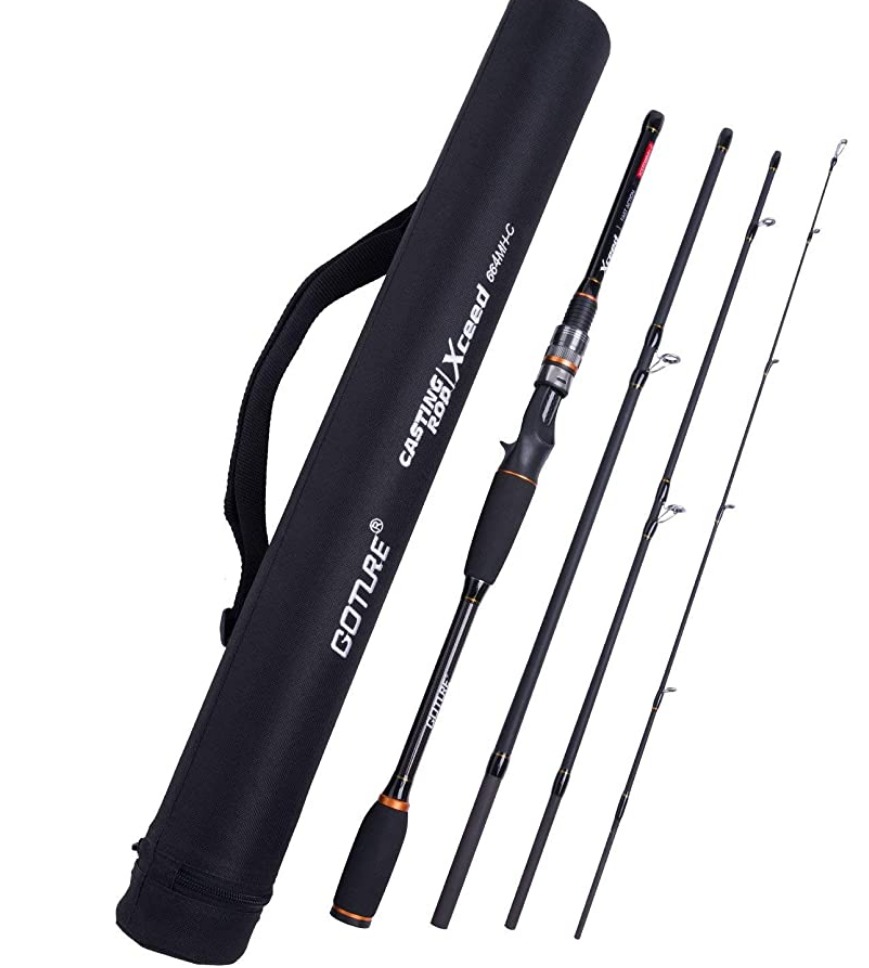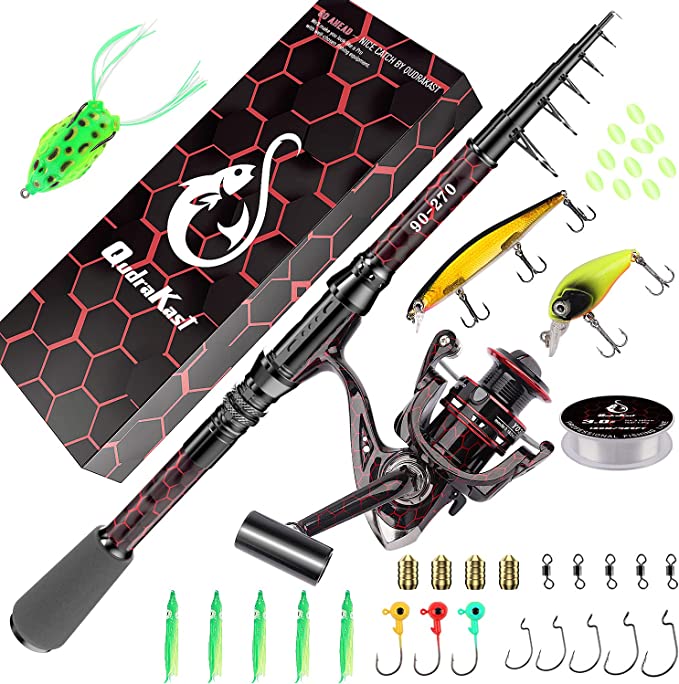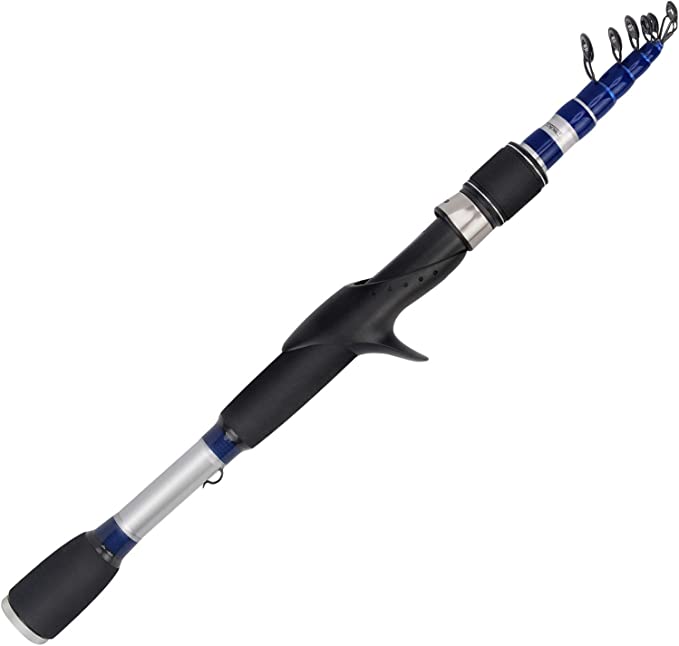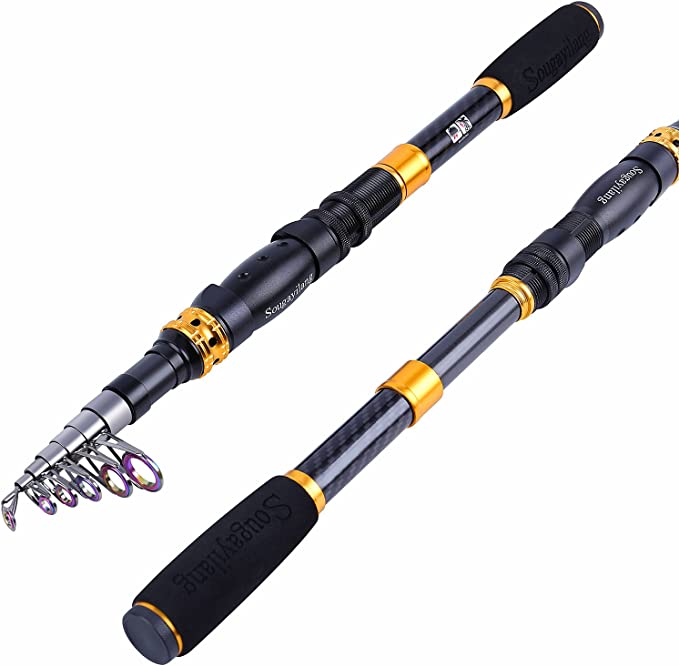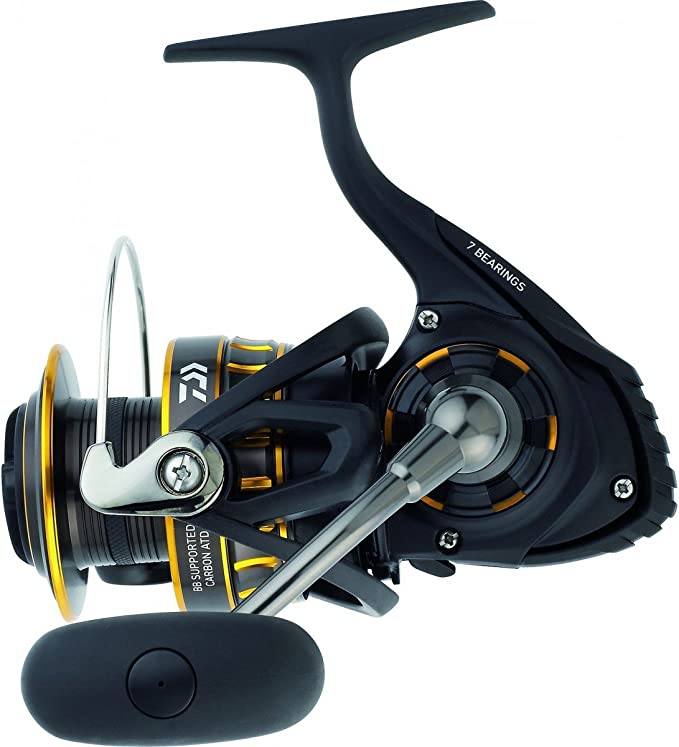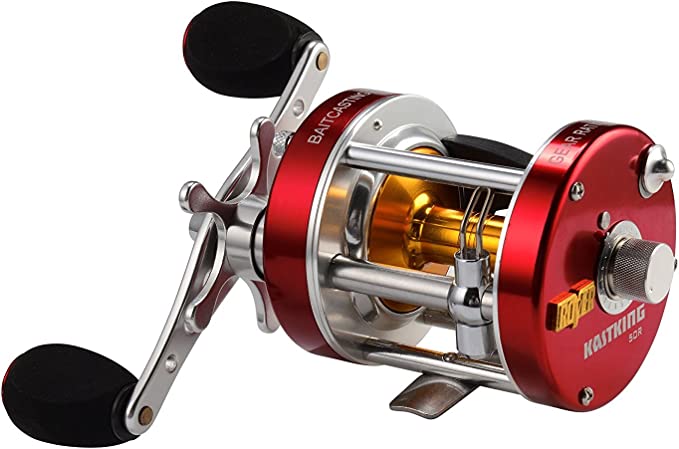The Anatomy of a Modern Travel Rod: A Deep Dive into the KINGSWELL 609MHRR
Update on Aug. 1, 2025, 10:48 a.m.
There is a particular kind of quiet heartbreak known only to the traveling angler. It’s the sight of a mist-covered alpine lake at dawn, the glimpse of a perfect, eddying stream on a long road trip, or the discovery of a fish-rich inlet on a family vacation—all met with the same sinking feeling: “If only I had my rod.” For decades, this was the angler’s gambit, a forced choice between the freedom of travel and the joy of fishing. To bring a rod was to be burdened; to leave it was to risk regret. The market was filled with compromises: flimsy, toy-like telescopic rods that felt more like an apology than a tool.
But engineering, at its best, refuses to accept such compromises. It seeks to solve the equation. The KINGSWELL 609MHRR Telescopic Fishing Rod and Reel Combo is a fascinating case study in this pursuit. To dismiss it as just another collapsible rod is to miss the story told in its materials, its mechanics, and its thoughtful design. This isn’t just about shrinking a fishing rod; it’s about concentrating its very soul into a package that sets you free. Let’s pull back the curtain and explore the anatomy of this modern engineering solution.
The Rod’s Nervous System: A Study in Carbon Fiber
At the core of any high-performance rod lies its blank, the rod’s skeleton and central nervous system. The KINGSWELL rod is built from “Japanese 24/30 ultra high density carbon fiber.” This is the foundation of its entire character. In the world of material science, these numbers refer to the graphite’s modulus—a measure of its stiffness in relation to its weight. A higher modulus means greater stiffness without adding mass.
This isn’t simply about being strong and light. Think of the rod as a highly sensitive nerve. The high-modulus carbon fiber transmits vibrations with incredible efficiency. When a fish subtly mouths your lure hundreds of feet away, that tiny “tick” travels up the line, through the guides, and into the carbon blank. The stiffness of the material allows that vibration to reach your hand with startling clarity. This is the “sensitivity” anglers crave, transforming a passive wait into an active, connected experience.
Furthermore, the “24/30” designation hints at a composite design. The lower sections, forming the rod’s “backbone,” are engineered for power and lifting strength. The upper sections, tapering to the tip, are designed for sensitivity and a fast action, allowing for quick hook sets and the ability to cast lighter lures effectively. It’s a delicate balance—a powerful spine capable of handling a spirited bass, connected to a set of fine nerve endings that can detect the faintest whisper of a bite.
The Laws of Motion: The Physics of an Effortless Cast
One of the most elegant design features of this rod is its “Floating Guide System.” Consisting of five fixed and two adjustable guides, it directly addresses a fundamental problem of physics in casting. When you cast a spinning reel, the line peels off the spool in coils. As these coils travel up the rod, they slap against the blank and are funneled through the guides. Each point of contact creates friction, robbing the cast of its momentum and, therefore, its distance.
The floating guides are a clever solution. By allowing the angler to position these two guides optimally along the blank, you can create a straighter, smoother path for the line. Imagine water flowing through a garden hose. A straight hose allows for maximum flow, while every kink restricts it. The floating guide system effectively “un-kinks” the line’s path, minimizing the oscillations and friction. The result is a more efficient transfer of energy from the rod to the line, allowing for longer and more accurate casts—a critical advantage when you need to reach that distant structure where the big fish are hiding.
The Heartbeat of the Machine: The Engineering Within the S3000 Reel
If the rod is the nervous system, the S3000 reel is the heart and muscle. It’s a compact engine designed for smooth power delivery. Let’s break down its core mechanics:
The 5.2:1 gear ratio is the reel’s transmission. It means for every complete revolution of the handle, the spool turns 5.2 times. This ratio is a sweet spot, offering a good pace for retrieving lures while retaining enough torque, or cranking power, to manage a stubborn fish.
The 5+1 stainless steel ball bearings are the secret to its fluid operation. They are placed at critical stress points within the reel’s body to reduce friction between moving parts. This is what provides that “smooth retrieve.” Under the pressure of a fighting fish, a reel with fewer or lower-quality bushings would grind and feel rough; the ball bearing system ensures that even under load, the operation remains seamless and efficient.
Perhaps the most crucial component is the 15-pound drag system. A common misconception is that drag is simply a brake. It is far more sophisticated. Think of it as a meticulously controlled friction clutch. When a large fish makes a powerful run, the drag system allows the spool to give out line at a consistent, pre-set pressure. This does two things: it prevents the sudden force from snapping your line, and it tires the fish out. The fight becomes less about a brute-force tug-of-war and more of an elegant dance, with the angler using the reel’s drag to absorb the fish’s energy until it can be safely landed. The use of an aluminum body and spool ensures the entire assembly remains rigid, keeping the gears and drag washers in perfect alignment when that pressure is applied.
A Symphony of Design: The Sum of the Parts
What elevates a piece of gear from good to great is synergy—the way all its individual parts work in concert. The lightweight carbon rod balances perfectly with the compact S3000 reel, creating a setup that feels like an extension of your arm, not a clunky apparatus. User-centric details, like the alignment markings on each telescopic section, eliminate guesswork and ensure the guides are perfectly straight for optimal casting every time. The choice of a real wood foregrip and an EVA foam handle isn’t just aesthetic; it speaks to the ergonomic experience, providing a secure and comfortable hold for long hours of fishing.
This is where engineering transcends mere function and becomes a form of art. It’s the realization that the person who designed this combo understood the experience of fishing. They knew that a tool that is easy to assemble, comfortable to hold, and reliable in action inspires confidence, allowing the angler to focus on the water, not the gear.
In the end, we return to the traveler by the water’s edge. With a tool like the KINGSWELL 609MHRR, the narrative changes. The feeling of regret is replaced by one of possibility. The engineering packed into this compact form doesn’t just represent a portable fishing rod; it represents freedom. The freedom to say “yes” to any adventure, to explore any waterway, and to know that you are not carrying a compromise, but a finely tuned instrument, ready to connect you with the wild. True portability, it turns out, is not defined by what you leave behind, but by the depth of capability you can carry with you.
